TOP / Events / Investigation of Technological Research Trend on the Pacific Basin Lighting Congress -LUX PACIFICA-, and on the Lighting Culture of the Conference Host Country
Investigation of Technological Research Trend on the Pacific Basin Lighting Congress -LUX PACIFICA-, and on the Lighting Culture of the Conference Host Country
4. Notes on Impression of Venues
(Being Exposed to the Lighting Culture of Venues)
One of the joint authors happened to have had opportunities to attend all of the four conferences of the Pacific Basin Lighting Congress from the Shanghai conference in 1989 to the New Delhi conference in 2002. Reflecting such experiences, impressions of the host countries (venues) will be introduced, touching on the lighting culture of each venue around that time.
By the way, although the third conference was successfully held at the Nagoya International Conference Hall in Nagoya City, Japan, in October 1997, with many participants from twenty-two countries and areas, this article will focus on the Pacific Basin Lighting Congress held in the overseas countries (the Shanghai conference in 1989, the Bangkok conference in 1993, and the New Delhi conference in 2002) to report impressions of the venues.
4.1 LUX PACIFICA ‘89 (Shanghai Conference)
This memorable first conference was held at the Shanghai Science Hall (bilayer modern and elegant design) of Shanghai City Science and Technology Association near at the Fuxing Park in Shanghai City, the center of finance and international trade in the People's Republic of China in April 1989. It was a memorable conference also for this writer because of his initial role in the international conference held overseas, and he has fond memories of it. This writer would like to trace his memories at that time as though looking at the old photo album.
Our airplane arrived at the Shanghai HongQiao Airport. The current entrance of the international airlines at Shanghai is Shanghai Pudong International Airport, and the HongQiao Airport, where sixteen Japanese participants to the conference stepped on the land of Shanghai for the first time, has been used for domestic airlines. The Shanghai HongQiao Airport at that time was yet one floor (currently two floors) and it was in the middle of facility expansion works for the arrival and departure lobbies. It is remembered that the inside of the terminal was fully paved with plywood.
The first impression of downtown Shanghai was that the streets were brimming over with many people, and this writer felt a power that cannot be felt in Japan, while looking at the bicycles rushing into a crossing like a flood and the bustle of the streets. Around that time, signals were rarely seen in the main streets and, in crossings without signals, cars and motorbikes, bicycles, and pedestrians proceeded to and fro in complete harmony as if there were “an order within chaos.” It is considered that a person with weak nerves can not do anything but stand rooted at a spot in the street.
Regarding the streetscape at that time, there still remained many two-floor condominiums (Linong), which were constructed in bulk during the period of foreign settlement in Shanghai and had comparatively subdued color. There was washing hung on rods to dry on the street sides. It was very impressive to see that all the young ladies walking through Nanjing Road, the most famous downtown street in Shanghai, wore slacks without exception.Regarding the lighting of the city, the number of street light was minimal, there was no illumination of facilities, and we had an impression of the night town being gloomy as a whole. However, despite this, the energetic light of the naked incandescent lamps, which were lit brightly at street stands, the light of the naked fluorescent lamps at the eating places with earthen floor (stores), and the smiles of the staff there are remembered vividly.
In current Shanghai, which has been transformed into a futuristic city entering the 21st century, there is a wilderness of modern highly-technological, high-rise buildings, which have shot up like bamboo shoots after a rain, and the street scene, where the traditional and the novel are interwoven, has been changing day after day. Now, the streets of Shanghai (e.g. Nanjing Dong Road, Huaihai Road, Waitan, Pudong New District, etc.) are flooded with light and fresh colors (produced with colored light) and they have been transfigured so that it is not an exaggeration to say that it is a “city of light.” Especially, the Linong left in the neighborhood of Huaihai Road have changed to fashion spots and fascinate the hearts of the young people. The Shanghai kids gathering there walk around in new fashions and novel makeup in which no difference from those of Japanese youngsters in the Shibuya, Harajyuku, and Roppongi areas in Tokyo can be perceived.
Fifteen years, a long time after the first Lux Pacifica Shanghai conference, have changed the street scenery and the lighting culture of Shanghai, China. (Fig. 13, Fig. 14)
Fig. 13 Lighting for Store Illumination (Eating Place)
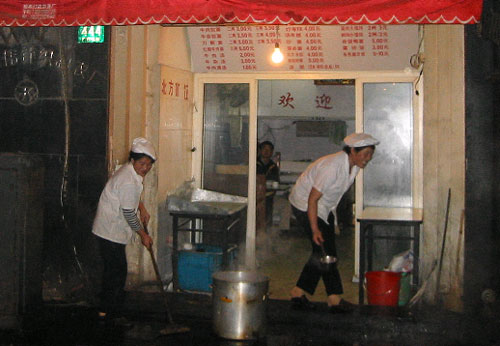
Fig. 14 Night Scene of Today's Shanghai (Pudong New District)

4.2 LUX PACIFICA‘93 (Bangkok Conference)
The second conference was held at the Queen Sirikit National Convention Centre, which was in mint condition immediately after completion of construction, in Bangkok City, the capitol of the Kingdom of Thailand, in November 1993.
The capitol city of Bangkok has a sublime and flamboyant palace shining in full color and many studded temples, and this metropolis, where tranquility and vitality co-exist and the east and west cultures are merged, is energetic and exotic.
Via Thai Airline, on which the orchid service enjoys popularity, we set foot at the Bangkok International Airport (Don Muang Airport) and stepped into the city of Bangkok after entry formalities. What initially surprised us were the flavors of spices, chronic traffic congestion (the major means of transportation in the city were cars, motorbikes, and the Bangkok-specialty “tuku tuku,” a marvelous vehicle that can be seen commonly in Thailand but never in Japan) and, especially, embarrassment at the excessive use of air conditioners.
The city of Bangkok is divided into two areas by the Chao Phraya River, which flows through the center of the city. In the Bangkok District on the east bank, there were many foreign-affiliated, high-rise, first-class hotels, and there were nights flooded with beautiful light by light-up, illumination, and so on. There were many bright advertisement panels of electric spectaculars and store illumination on the office streets (e.g. Silom Road, Surawong Road, New Road (Charoenkrung Road)) and shopping streets where people gathers (e.g. vicinity of Siam Square and Rachadamri Road). Street illumination of the main streets was complete and the image of the city was comparatively bright.
The Thonburi District is located on the west bank of the Chao Phraya River. The sight of this area was felt as if it were the classic scenery of the so-called “Venice of the Orient,” and the canals of branch rivers connected each other like the mesh of a net. There remained in this area an atmosphere of the life of the common people in old good days. There was no fancy illumination as seen in the downtowns and the atmosphere was comparatively placid, but we felt it dim. The most impressive sight were that barrack-style residential houses (stores also) of water people, which were bunched on both banks of the narrow branch rivers (canals), and both sides of the canals were fully equipped with channel illumination (mercury lamps). One could misread the scene to see it as a road if there were no water and water market boats. (In other words, it looked like a water-covered road after a direct hit by a typhoon.)
By the way, we were stunned to see high-speed shared-ride ships (long tail boat) going like a bombs through the Chao Phraya River, which seemed to this writer to be polluted and unpleasant smelling, and its branch rivers (canals). The long tail boat had a simple structure, which was composed of a long and thin lightweight body painted with flamboyant colors, a four-cylinder diesel engine, which was probably converted from truck use, exposed on the rear deck, and a screw connected to the output of the engine via a long shaft. Piloting of the boat was made, not by a rudder, but by simply controlling the direction of the bare engine (screw shaft), which was flexibly mounted, and by a throttle lever. Without any mufflers (needless to say, the anti-pollution catalytic converters seem to have been removed), but with massive noise, exhaust gas, and splashes, the ships were sailing fast, flamboyantly and noisily on the Chao Phraya River, as if they were insisting “I am here!”
Bangkok, which is called the City of Angel, is well developed with Wat Phra Kaeo, the guarding temple of the dynasty, and the palace at its center. It is an energetic city that has been expanding continuously by the vitality of the young generation, and it is assessed that it will continue to transform as an international city in the future. When the city of Bangkok was seen through the windows of high-rise hotel at night, there was a mixture of bluish white light from mercury lamps and warm light from high-pressure sodium lamps. Also, only the assumedly central streets where people gather were outstandingly bright. It is remembered that we felt the night scenery somehow resembled to that of Japan. (Fig. 15, Fig. 16)
Fig. 15 Channel Illumination of Canal
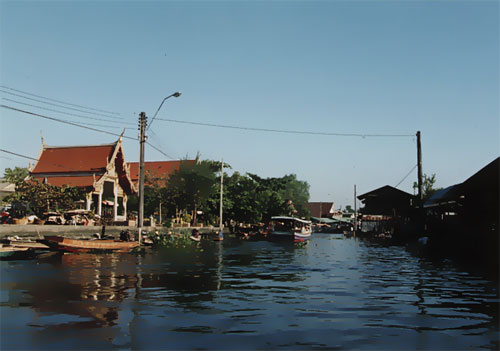
Fig. 16 On-Deck Engine of a High-Speed Shared-Use Boat (Long tail boat)
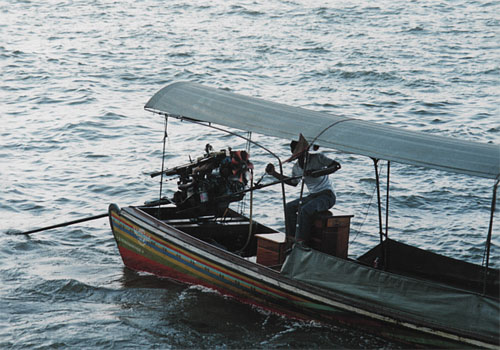
4.3 LUX PACIFICA 2002 (New Delhi Conference)
The fourth conference was held at the Vigyan Bhavan Convention Center located in the central part of New Delhi of Delhi City, the capitol of the Republic of India, in September 2002. Since the Vigyan Bhavan Convention Center was used for the 1995 CIE India Conference, it was the second visit for this writer, and he had somehow a sentimental feeling.
The capitol city of Delhi, which is the gate between the Central Asia and Southern Asia, can be divided into the three areas of New Delhi, Delhi, and the city suburbs. The enormous traffic noise (the boom of the horns of the Auto-rikisha (the Indian specialty), the motorbikes, the taxis, and the shared-ride buses) were felt incomparably awful compared to the same in Bangkok. It is not rare in India to encounter the situation where a cow, which is respected as sacred animal in Hinduism, is striding slowly in the street or sitting down imposingly in the middle, making herself the cause of traffic jam. Although one may want to get her out of street by blowing his horn, such a deed is a punishable offense in India.
If you were a weak-minded person and face such awful traffic noises, as well as the persistent torture of street solicitation and begging (the trick for dealing with these is to resolutely turn down all demands), you might fall into a psychological condition of hating to leave your hotel room.
New Delhi is a new urban district located south of Connaught Place, where shopping malls gather in the blocks concentrically arranged with the Central Park in their center. It is featured with well maintained streets and wide roads, with Janpath Street running north and south in the center, and the India Gate (always lit up), presidential mansion, foreign-affiliated premier hotels (light-up and illuminated), banks, and so on are concentrated there.
Old Delhi is the old urban district spread around the Delhi Gate, located on the north-east side of the Connaught Place, and where the streets are scarcely maintained. This is an area over which hangs the hustle and bustle of the homeless (those living in the plantation on the road side and at the side of pedestrian passage) and the people of low-income class, and it is dark at night.
In both New Delhi and Old Delhi, the road illumination by the warm light of high-pressure sodium lamps was fully equipped, but the number of street lights (light-up of facilities, window illumination of commercial stores, advertising illumination, and so on) was small, and the impression was comparatively gloomy. Especially, the spacing of luminaires got greater as one went toward suburbs, and a remarkable darkness was felt. In other words, it is assessed that a master plan and so on for the city scenery illumination has not yet been established.
Since we had a precious opportunity to visit the residence of a person of high class in India (the manager of a national corporation) by the special arrangement of Professor Masato Oki, Department of Architecture, the Ashikaga Institute of Technology, who has a deep knowledge of various cultures of India, we would like to introduce the illumination of an Indian residence.
The visited residence was located in the suburbs at a distance of 40 to 50 minutes by car from the city center. We were checked by armed guards at an outer gate facing the common road to get inside of the premises, and we went further for a few minutes by car to arrive at a chalky mansion. Getting out of the car, we were heartily welcomed by the owner and his spouse at the entrance gate of the mansion and went into it.
The height of the ceiling in the room was comparatively high, the interior was coordinated with white, and the floor was paved by marble slabs and thick carpets were laid on it. The walls of the reception room (living room) were ornamented with an Indian mandala, paintings, and so on. Similar to those in European countries, the main illumination was partial illumination by floor lamps, table lamps, and brackets, all with incandescent lamps, and there was a small decorative chandelier on the ceiling. There was an ambience of calm and a luxurious atmosphere in the interior, which was created by the soft indirect light with low color temperature. A space of a dining room with a vaulted ceiling up to the second floor was also illuminated by partial illumination with table lamps similar to the case of the living room.
It is assumed that this is a bright environment in the daytime, with a good dose of natural light through the lace curtains from the large side windows.
When we started living in India after our trip by air from Japan, we are initially frustrated by Indian people being comparatively unpunctual. However, after having spent three to four days with the Indian people, we naturally started to feel comfortable with the rhythm of life without a wrist watch, and we felt as if we gained greater breadth of character. This was brought about by the mysterious power of India. This may be the reason why we were charmed by India. (Fig. 17, Fig. 18)
Fig. 17 Night Scene of New Delhi (India Gate)
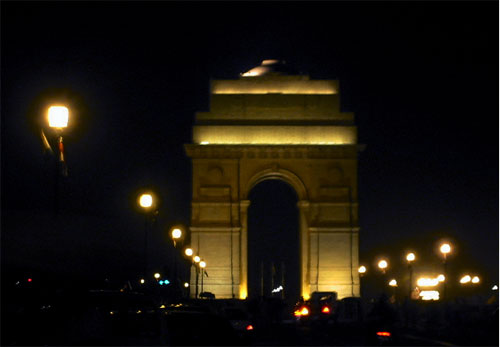
Fig. 18 Lighting of a Residential Reception Room in India
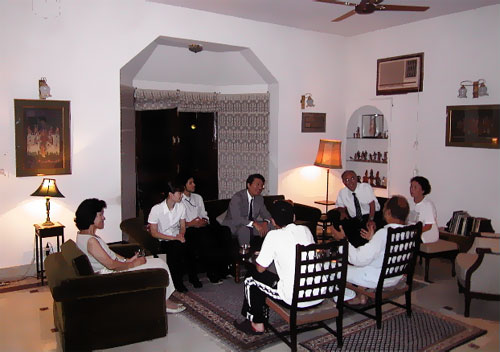
Professor Masato Oki, Ashikaga Institute of Technology, his wife, students, and Professor Yosiki Nakamura, Tokyo Institute of Technology, having a pleasant talk with the host in the center
| forward | 1 | 2 | 3 | 4 | next |